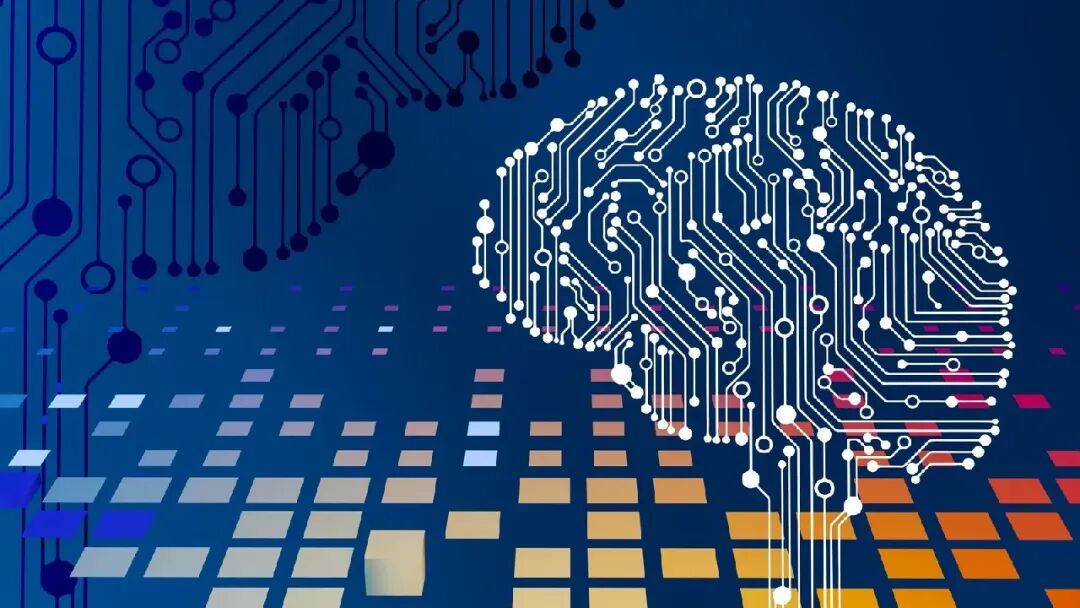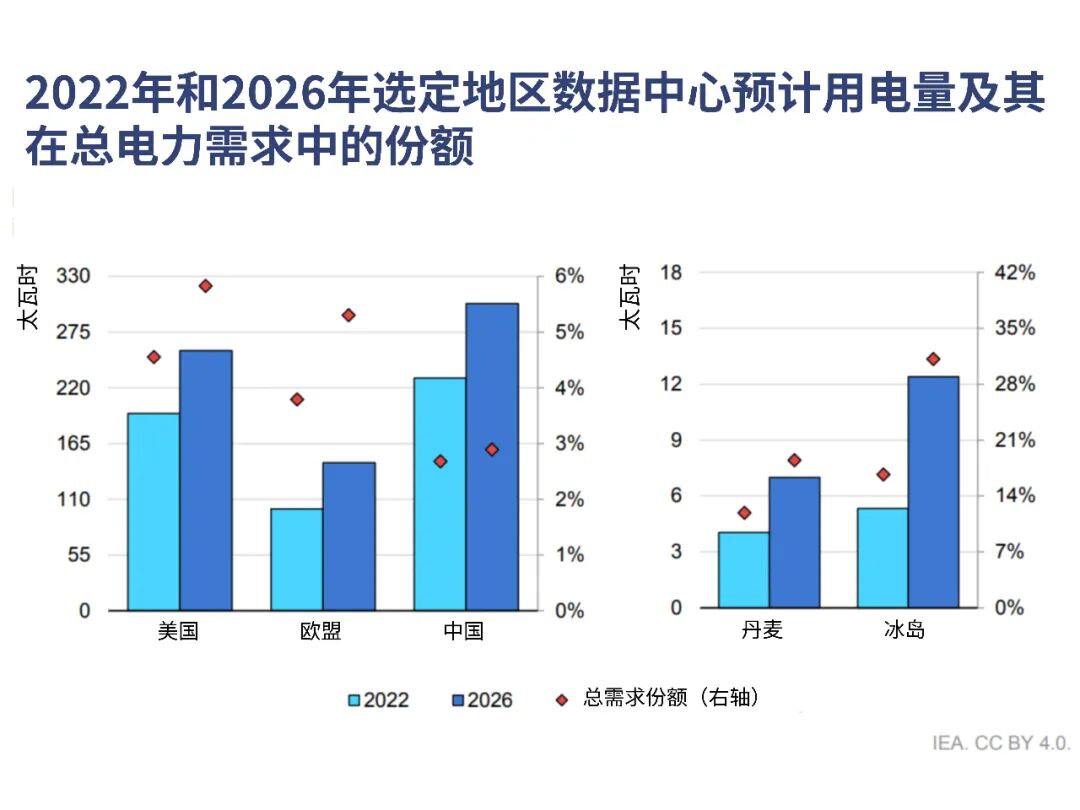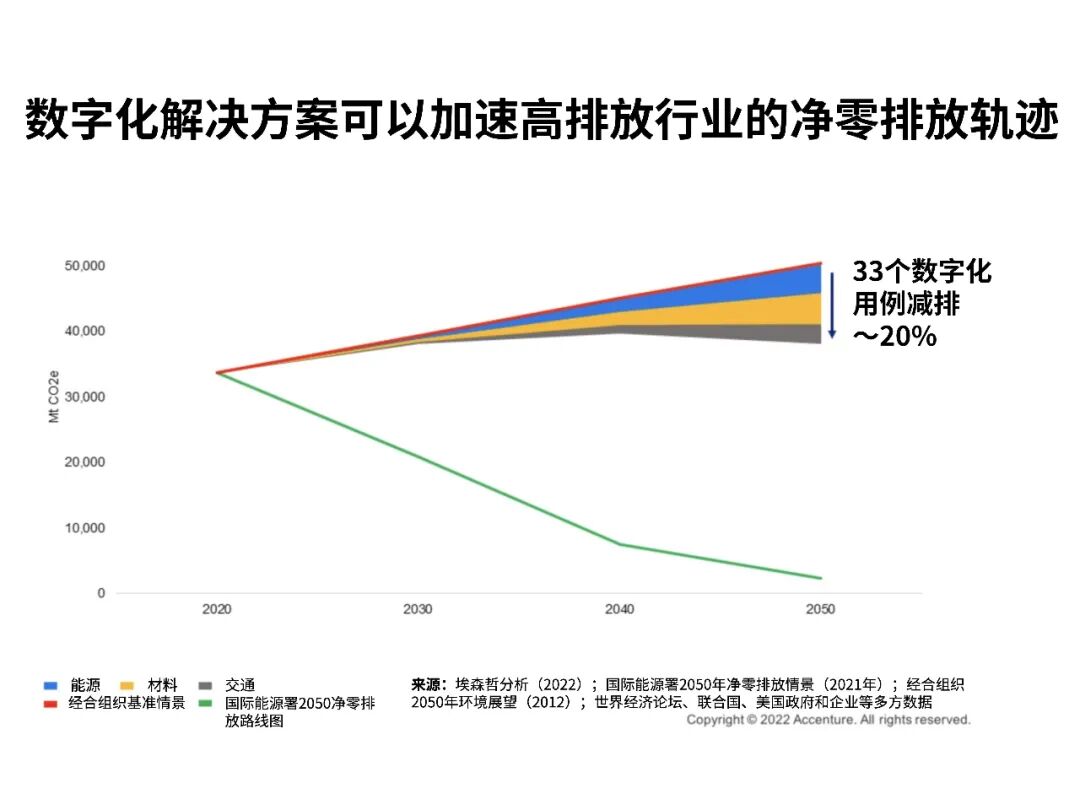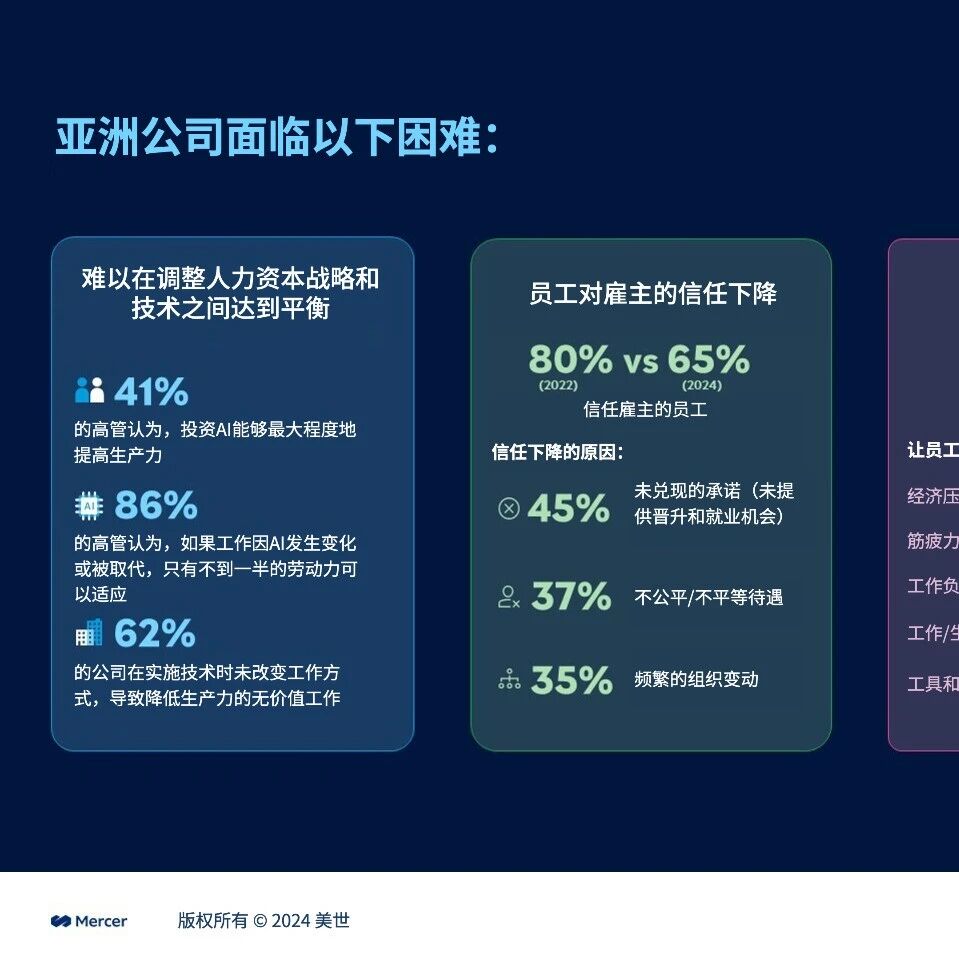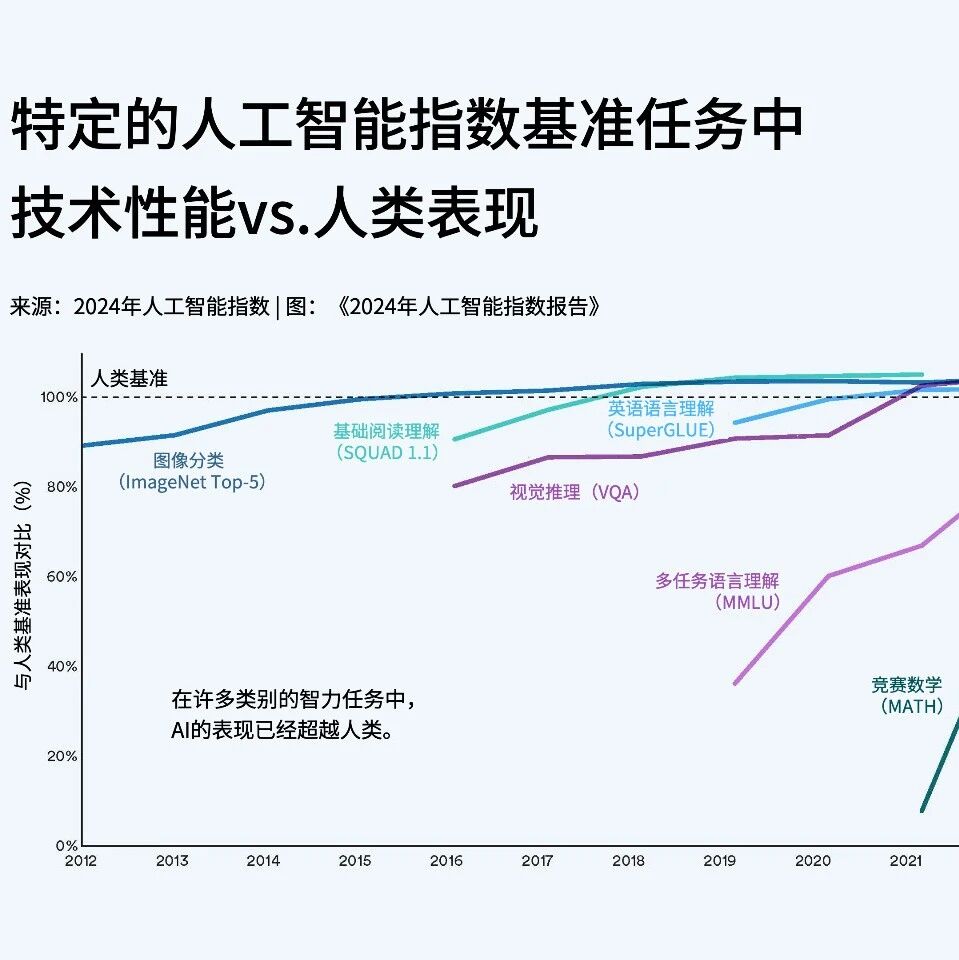Artificial intelligence requires powerful computing capabilities, but AI tools can also help accelerate the energy transition.
Image source:Unsplash/Steve Johnson
Eleni Kemene
Head of Industrial Decarbonization at the World Economic Forum
Bart Valkhof
Global Head of the Information and Communication Technology Industry at the World Economic Forum
Thapelo Tladi
Head of the World Economic Forum's Energy Initiative
Tech companies report that carbon emissions from data centers have risen as they scale up to support AI operations.
However, AI tools also help accelerate the energy transition.
Multilateral stakeholder platforms like the World Economic Forum’s AI Governance Alliance are crucial for helping to balance AI resource usage and maximize its positive benefits.
How much energy does artificial intelligence consume? If we ask ChatGPT, here's what it says:"Energy consumption in AI systems varies significantly depending on their complexity and intended use, but they typically require substantial amounts of electricity to efficiently process and analyze data."It is estimated that ChatGPT consumes roughly ten times more energy than Google Search just to respond to this single sentence. With 100 million users visiting ChatGPT each week, the additional energy demand is already starting to add up—this figure represents users on just one platform alone.In the broader AI industry, the growing energy demand—largely driven by the construction and operation of data centers used to train and run AI models—is contributing to rising global greenhouse gas emissions.Microsoft, one of the investors in ChatGPT developer OpenAI, has positioned generative AI tools as central to its products. The company recently announced that its carbon dioxide emissions have risen nearly 30% since 2020, driven by the expansion of its data centers. Meanwhile, Google’s greenhouse gas emissions in 2023 were almost 50% higher than in 2019, largely due to increased energy demands tied to its data center operations.Therefore, while AI tools are expected to aid the energy transition, they also require robust computing power to support them.What’s driving the energy demand for artificial intelligence?Currently, AI-related energy consumption accounts for only a small fraction of the tech industry's electricity usage—estimated at around 2-3% of global total emissions. However, as more businesses, governments, and organizations adopt AI to boost efficiency and productivity, this trend could shift significantly. As illustrated in the chart below, data centers have already become a major driver of rising electricity demand in many regions.Global electricity consumption of data centers.
Image source:International Energy Agency
Artificial intelligence requires vast computational power, and the energy needed for generative AI systems to complete a single task can already be up to 33 times greater than that required by software specifically optimized for a particular task.As artificial intelligence becomes more widespread and continues to advance, training and running these models will drive an exponential increase in the number of global data centers—and the associated energy consumption. This, in turn, will place ever-greater strain on already overburdened power grids.Generative AI models are particularly energy-intensive to train, consuming far more electricity than traditional data center operations. As one AI researcher put it: "Once AI models reach the deployment stage, they absolutely must remain continuously powered on—take ChatGPT, for example; it never shuts down."The complexity of large language models, like the one used to build ChatGPT, continues to grow steadily—indirectly highlighting the ever-increasing energy demands of artificial intelligence.It is estimated that training a model like GPT-3 would consume nearly 1,300 megawatt-hours (MWh) of electricity—roughly equivalent to the annual energy usage of 130 U.S. households.Training the more advanced GPT-4 is estimated to consume 50 times more electricity than GPT-3.Overall, the computational power required to sustain AI growth roughly doubles every 100 days.How can the AI industry improve energy efficiency?This compels society to grapple with some challenging questions: Do the economic and societal benefits of artificial intelligence outweigh the environmental costs it entails? More specifically, do the advantages AI brings to the energy transition surpass the additional energy consumption it generates?Finding the optimal balance between challenges and opportunities will be key.The report predicts that by 2030, artificial intelligence could help reduce global greenhouse gas emissions by 5 to 10%. But how can we achieve this balance?Regulatory bodies, including the European Parliament, have begun drafting requirements mandating that AI systems be equipped with the ability to log energy consumption. Meanwhile, technological advancements could also help address AI’s energy challenges—more sophisticated hardware and processing capabilities are expected to significantly boost the efficiency of AI operations.Researchers are designing specialized hardware, such as new accelerators, 3D chips with dramatically improved performance, and innovative chip-cooling technologies. Chipmaker Nvidia claims its new "superchip" can boost performance by up to 30 times—and reduce energy consumption by as much as 25 times—when running generative AI services.Data centers are also becoming increasingly efficient. To further boost efficiency, researchers are exploring new cooling technologies and selecting sites that can perform more computations when electricity is cheaper, more abundant, and more sustainable.Additionally, reducing overall data usage will also be crucial, including addressing the issue of "dark data"—data that’s generated and stored but never reused. Meanwhile, leveraging smaller language models that require fewer resources for specific tasks will prove beneficial. Striking a better balance among performance, cost, and the carbon footprint of AI workloads will be key to success.What impact does artificial intelligence have on the power grid?Artificial intelligence isn't the only factor putting pressure on the power grid. Rising energy demand driven by population growth and the trend toward electrification could also slow down the pace of grid decarbonization.However, achieving net-zero emissions in economic activities hinges on making the power grid cleaner, more modern, and decarbonized.Data center operators are exploring alternative energy solutions, such as leveraging nuclear technology to power their sites or adopting hydrogen-based energy storage systems. Meanwhile, companies are also investing in cutting-edge technologies like carbon removal—methods that capture CO₂ directly from the air and safely store it underground.Artificial intelligence can also help overcome the challenges of integrating large amounts of renewable energy into existing power grids.Renewable energy generation is inherently unstable, often resulting in excess power during peak hours and insufficient supply during off-peak periods—leading to both energy waste and grid instability. By analyzing vast amounts of data, such as weather patterns and energy consumption trends, artificial intelligence can accurately predict power output with remarkable precision.This helps enable job scheduling and load shifting, ensuring that the data center uses energy when renewable power is available—thereby maintaining optimal grid stability and efficiency while delivering round-the-clock clean electricity.Digital technologies, including artificial intelligence, can make a significant contribution to helping industries like energy achieve net-zero emissions.
Image source:Accenture, the International Energy Agency, the OECD, the World Economic Forum, the United Nations, and the U.S. Government
From building modeling to predicting energy usage, optimizing heating and cooling performance, and even boosting manufacturing efficiency through predictive maintenance, AI is also empowering other high-emission industries to enhance their energy efficiency. In the agricultural sector, sensors and satellite imagery are already helping forecast crop yields and manage resources more effectively.Balancing the energy consumption and emissions of artificial intelligence with its societal benefits requires addressing numerous complex and interconnected challenges, demanding a collaborative effort from multi-stakeholder groups.The World Economic Forum's AI Governance Initiative is adopting both cross-industry and industry-specific perspectives to explore how artificial intelligence can transform various sectors—and positively impact innovation, sustainability, and growth.As part of this initiative, the forum’s Energy and Materials Center and the Fourth Industrial Revolution Center are launching a dedicated working group to explore the energy consumption challenges of AI systems—and how artificial intelligence can be leveraged to accelerate the energy transition.
The above content solely represents the author's personal views.This article is translated from the World Economic Forum's Agenda blog; the Chinese version is for reference purposes only.Feel free to share this on WeChat Moments; please leave a comment below the post if you’d like to republish.
Editor: Wang Can
The World Economic Forum is an independent and neutral platform dedicated to bringing together diverse perspectives to discuss critical global, regional, and industry-specific issues.
Follow us on Weibo, WeChat Video Channels, Douyin, and Xiaohongshu!
"World Economic Forum"

